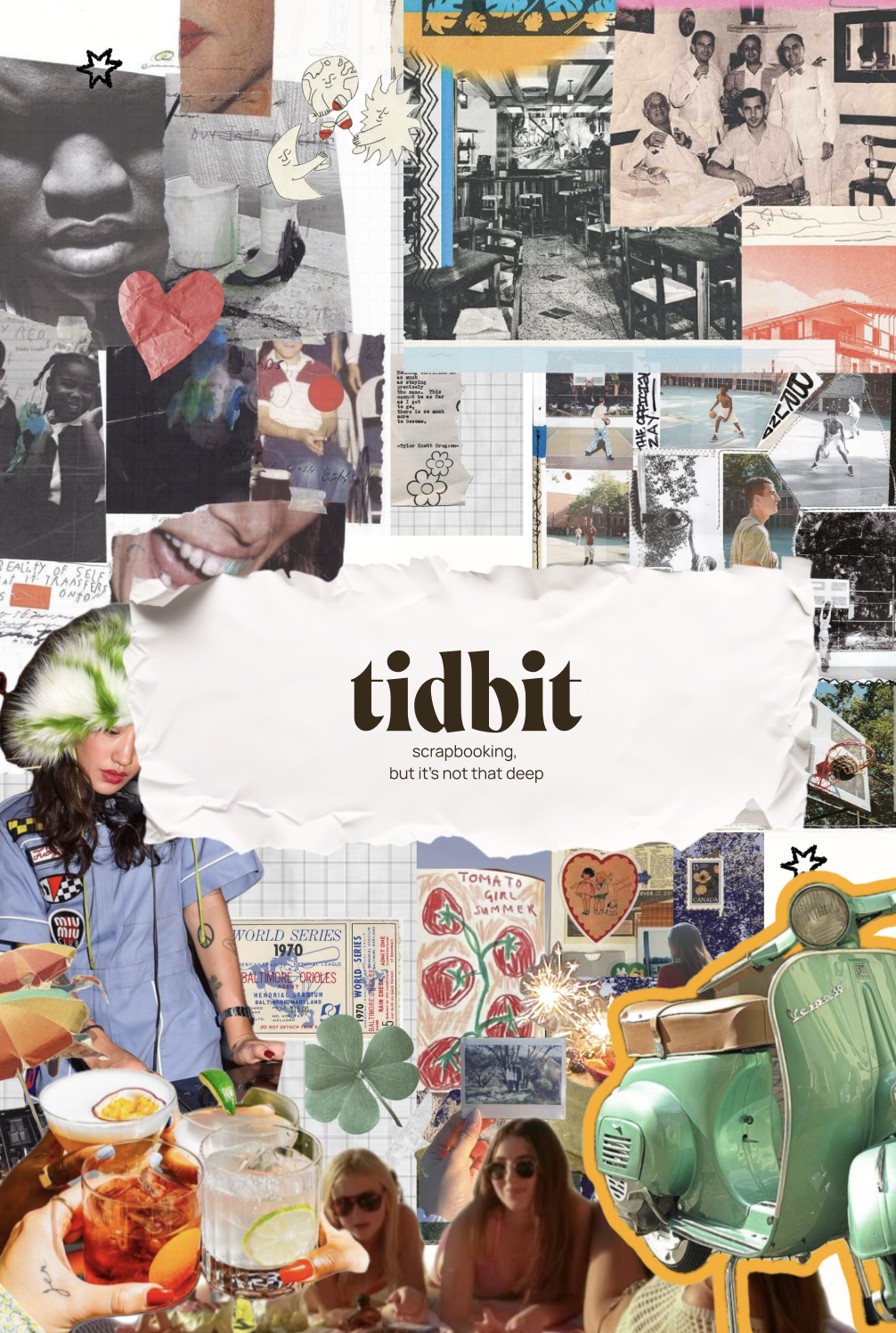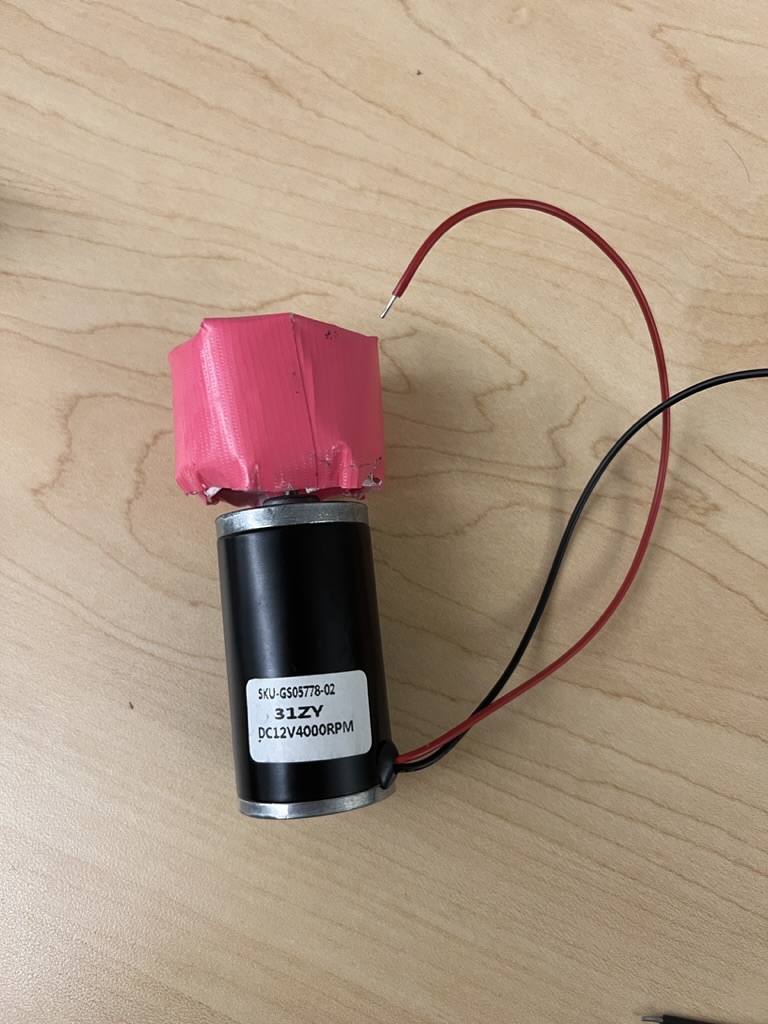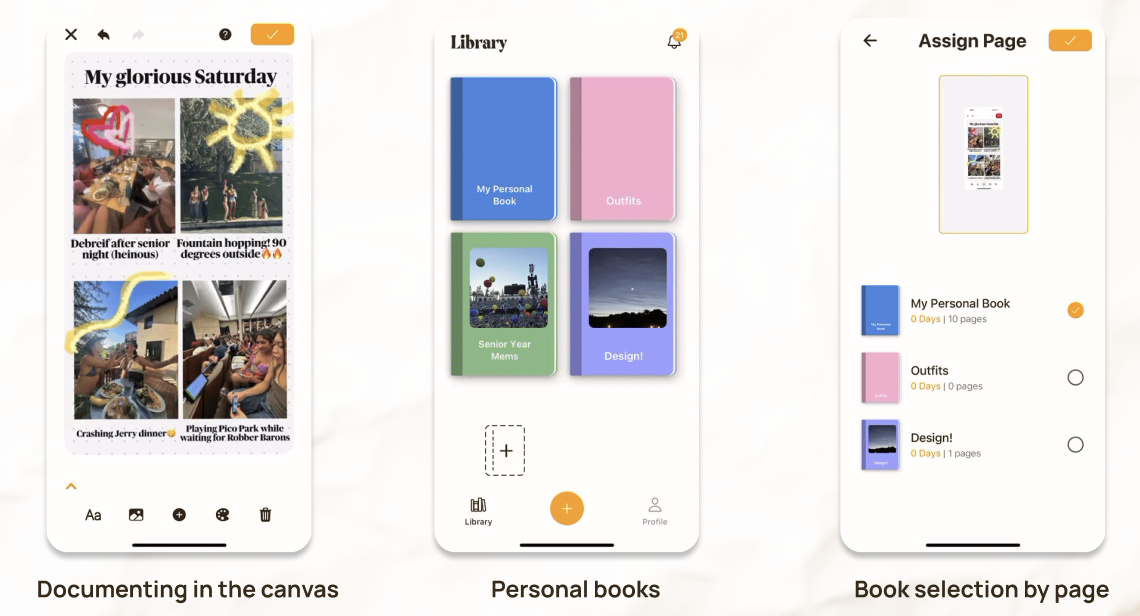How might we design a lightweight social platform that enables small groups of friends to share genuine, everyday moments - without the pressure of likes, feeds, or performative posting?
Process
User Research: Conducted thorough interviews and surveys to understand frustrations with current ways of connecting and documenting (performativity + lack of intimacy vs. too private or no incentive to share).
Ideation & Prototyping: Endless brainstorm sessions, sketched and wireframed multiple interaction models, converging on the scrapbook metaphor.
Usability Testing: Iterated on simple prototype interactions using Figma with peers, refining flows for seamless contribution and minimizing friction.
Development: a functional prototype built with React Native and TypeScript that allows for creating group books and sharing pages in real time.
Refinement & Branding: Applied design heuristics to ensure the app felt light, approachable, and intuitive, testing different branding themes with users to determine what felt right.
We created Tidbit, a social media app built around group books — collaborative scrapbooks shared among small friend groups. Each book acts as a shared canvas where members can casually add photos, text, and mixed media pages.
Unlike traditional feeds, Tidbit emphasizes:
︎ Intimacy → built for small groups, not audiences.
︎ Ease → contribution feels casual, low-effort, and unpolished.
︎
Playfulness → the scrapbook metaphor makes sharing creative and personal.

WaitLess, June 2025
The Challenge: Many patients experience gaps between therapy sessions where they lack structured emotional support. Journaling apps and static surveys exist, but often feel ingenuine, rigid, or high-effort, which discourages consistent use.
Process
Research & Insights: Conducted user interviews with patients and therapists to identify pain points in existing journaling and therapy support tools.
Key finding: patients wanted something that felt low-stakes and natural, while providers needed structured, clinically valuable data.
Concept Development: Explored multiple approaches to bridging patient and provider needs.
Landed on a voice-based interaction model for patients, paired with a summarization dashboard for therapists.
Design & Prototyping: Created wireframes and mockups of both the patient-facing conversational UI and the therapist dashboard.
Iterated on tone and interaction design to ensure the product felt gentle, supportive, and non-performative.
Development & Testing: Led front-end development and contributed to back-end/data structure design.
Built a functional prototype integrating voice input, AI-driven summarization, and provider dashboards.
Conducted usability testing with peers and adapted flows to balance ease of use with clinical rigor.
How might we create a gentle, low-friction way for patients to share emotional updates between therapy sessions, while giving therapists richer insight into their patients’ lived experience?
Solution
We developed Waitless, a voice-based AI agent designed to support patients with casual, conversational check-ins. Instead of journaling or filling out scales, patients could simply speak to Waitless, lowering the barrier to emotional expression.
On the provider side, Waitless aggregated patient check-ins into meaningful summaries and visual dashboards, offering therapists a clearer picture of their patients’ experiences between
sessions.
Outcome
Waitless demonstrated that AI-powered, conversational check-ins could meaningfully reduce barriers to emotional sharing while also enhancing clinical insight. By centering both the emotional experience of patients and the practical needs of providers, we built a product that was both human-centered and clinically valuable.
Project Edison, March 2022

In the day-to-day of a busy college student, how can keep our devices charged on-the-go?
Key details:


